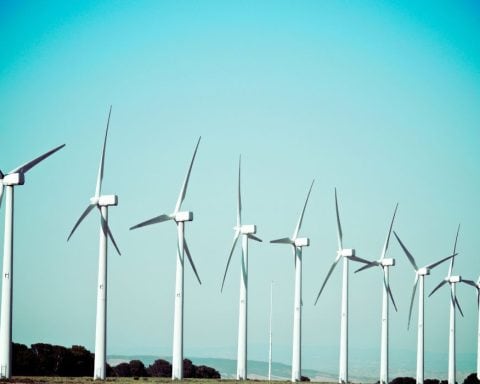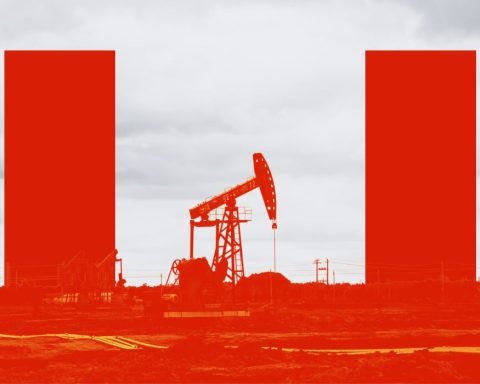In more normal times, the news that a major oil and gas company was cutting its dividend in half and planning to reduce its production by 40% would be met with an onslaught of selling. But these are not normal times, and that’s especially true for large oil and gas companies like BP. Case in point: on August 4, the date that BP announced it was fundamentally altering its business strategy to adapt to the challenges posed by climate change, its shares rose by about 7% – on a day when the broader index of energy producers saw much more modest gains.
“If that doesn’t tell you a story about how the math has changed, nothing will,” says Andrew Grant, the head of Oil, Gas and Mining at Carbon Tracker, a London-based not-for-profit think tank that researches the impact of climate change on financial markets. “I think it’s become very clear that the world is different now.”
The contours of that new world were mapped out in BP’s 2020 Energy Outlook, which the company released in mid-September. Gone was its bullish scenario from the previous year’s forecast that suggested oil demand could rise to 130 million barrels per day by 2040. Instead, it thought the best that oil producers should hope for is that demand levels recover to approximately 100 million barrels per day and flatline there for the next decade or so. But in both its “rapid” and “net-zero” scenarios, where climate policy is adopted around the world to varying degrees of ambition, demand falls off much more rapidly.
BP’s net-zero scenario made headlines around the world for suggesting that demand for oil has already peaked, and the company is acting like it believes that will happen. In addition to announcing that it will reduce its oil and gas production by 40%, it also pledged to cut its refining output by 30% within 10 years, all while shifting approximately one third of its new investments to low-carbon energy.
BP isn’t the only European oil and gas company that has recently announced a shift toward a lower-carbon business model. In April, Royal Dutch Shell committed to reaching net-zero emissions by 2050, with CEO Ben van Beurden noting that “global society, overall, may have until around 2060 to reach net-zero emissions. But Shell recognizes that it stands within a section of society that needs to move faster. And so that is what we intend to do.” France’s Total SE has also pledged to eliminate greenhouse gas emissions associated with its operations by 2050, while Italy’s Eni went even further by committing to hitting that target by 2040. But BP’s pledge to reduce its actual production, rather than simply eliminate the greenhouse gas emissions associated with it, is a major step forward. “It’s been a bit of an arms race, or so it seems, over the last year or so,” Grant says. “And BP has really jumped into the lead in that race.”
“It’s been a bit of an arms race, or so it seems, over the last year or so, and BP has really jumped into the lead in that race.”
–Andrew Grant, head of Oil, Gas and Mining at Carbon Tracker
Here in Canada, though, the race has been slower to get underway. Take Enbridge, which has one of the biggest renewable energy portfolios in Canada. In a June piece in the Financial Post, CEO Al Monaco said his company would take a “gradual” approach to increasing its exposure to renewable energy, which currently makes up approximately 5% of its total assets. Large companies like Suncor, Cenovus, and Canadian Natural Resources have all signalled their intention to reach net-zero emissions by 2050, but they haven’t fleshed out how they’re actually going to do that. Instead, there’s been a lot of hand-waving toward technological innovation and the ability of the industry to rise to challenges, with a focus on things like improved extraction processes and the replacement of coke-fired boilers with higher-efficiency cogeneration units.
These are the sorts of improvements that have helped drive the per-barrel emissions associated with oil-sands production down by 21% between 2009 and 2017. But they haven’t prevented the industry’s overall emissions from rising, as soaring production has swamped these efficiency gains. For all the recent talk about low-carbon innovation, some industry watchers point out that Canadian oil companies haven’t really taken any meaningful risks yet. Suncor, for example, recently announced a $15-million investment in LanzaJet, a new venture that will make lower-carbon jet fuel and renewable diesel; the company also added $50 million to the $76.3 million it had already invested in Enerkem’s biofuels. But those figures are only a fraction of Suncor’s revised 2020 capital budget, which is expected to range between $3.6 and $4 billion.
“I think our pseudo-national oil companies are the least innovative national oil companies in the world,” says Sean Collins, founder of Terrapin Geothermics and an Energy Futures Lab fellow. “Even your Saudi Aramcos of the world are putting billions of dollars into direct renewables, and we’re nowhere to be seen.”
“I think our pseudo-national oil companies are the least innovative national oil companies in the world.”
–Sean Collins, Energy Futures Lab fellow
The idea of reducing production, rather than just the emissions associated with it, to meet net-zero goals remains largely taboo among industry leaders. When asked by the Financial Post back in February if his company would consider letting its production decline in the face of growing environmental concerns, Suncor CEO Mark Little said, “We don’t think that’s a solution.” By June, however, Little had written an op-ed in Corporate Knights stating that energy companies are “best positioned to invest in and lead energy transformation,” noting that “now is the time to take a big step forward.”
Canadian companies have yet to really take those steps – or undertake the same transformations that are proving profitable in Europe. In November 2017, for example, Italy’s ERG received €270 million for selling off its share of a joint venture that included 2,600 service stations and a minority stake in an oil refinery. That completed its transition from a company that owned refineries, pipelines and gas stations to one that invested primarily in wind, solar and hydroelectric projects – and since then, its shares are up nearly 50%. Earlier that year, Denmark’s Ørsted (formerly the Danish Oil and Gas Company) completed a similar transformation by selling its oil and gas business to petrochemical company Ineos for €$1.05 billion. Its shares have more than doubled since then. And the value of an investment in Finland’s Neste, which began as that country’s state oil company but has built a growing fleet of renewable diesel plants in recent years, has tripled over the same period. By comparison, the S&P Commodity Producers Oil & Gas Exploration & Production Index has been cut in half.
That sort of pivot would be harder to make for Canada’s oil and gas companies, which have many decades worth of reserves on their books (and nobody to sell them to). But they may not have to pivot as aggressively as their European peers. Instead, they could tap into those reserves and put them to uses other than combustion, from the creation of high-strength carbon fibre (which can displace steel) to the production of lower-carbon blue hydrogen. “That feels like a much different proposition than getting into solar or wind,” says Jamie Bonham, the director of corporate engagement at NEI Investments. “It feels like something that’s more in their wheelhouse.”
But if Canada’s oil and gas companies aren’t keeping up with the European supermajors, they’re at least ahead of their peers south of the border. The climate pledges of large integrated companies like ExxonMobil and Chevron are conspicuously modest, while the ones made by shale producers are effectively non-existent. Canadian oil companies have largely accepted the nature of the challenge and the need for tools like carbon pricing to help meet it. “The existence of this trajectory is something that’s no longer a debate,” Bonham says. “That puts the industry in a better place than its U.S. peers.”
Husky Energy, for example, recently announced that its executives will now be paid in part based on how effective the company is at achieving its target of reducing greenhouse gas emissions by 25% by 2025. “The conversation is beginning to occur in Canada,” says Janet Annesley, Husky’s senior vice-president of corporate affairs and human resources. Meanwhile, the relatively concentrated nature of Canada’s industry, both in terms of the number of companies and the geographic footprint of the assets they control, gives it an edge when it comes to deploying new technology. “When you have the world’s second-largest oil resource in one place, and projects that have a 30- to 50-year lifespan, you have the ability to focus on finding those solutions – versus some of the shale plays that are much shorter in life-span and are more dispersed and make the cost of applying those solutions so much greater,” Annesley says. “They can’t even really capture their methane down there because they don’t have the pipeline network.”
The big question now is whether those Canadian companies will take advantage of these relative strengths or squander them if and when oil prices recover. “The Canadian companies will say the words,” says Collins. “But do they believe it in their souls – that it’s the future? Because if you don’t, then as soon as prices rise again it’s back to your comfort zone.” Even if they continue moving in the right direction, Bonham worries that it’s not fast enough. “I feel like they’re on the right path, and they’re attacking some of the right issues. But it’s not entirely clear to me that the urgency of the moment is being fully embraced.”
Max Fawcett is a freelance writer and the former editor of Alberta Oil magazine.
Big Oil’s clean investments are still small fry
With oil companies committing to net-zero targets, Corporate Knights decided to follow the money to see exactly how much has been allocated to low-carbon investments so far. We tallied spending in R&D, capital expenditures, acquisitions and other investments (including joint ventures and share purchases in other companies). Here’s how it breaks down:
What % of their investments were clean in 2019?
BP: 0.77%
Chevron Corp.: 0.0%
Exxon Mobil Corp.: 0.0%
Royal Dutch Shell: 0.07%Total SE: 0.0%
METHODOLOGY: Investments were determined to be clean if they corresponded with the Corporate Knights Clean Revenue Taxonomy. General commitments and future-oriented pledges were not included. If investments were spread over multiple years (e.g. a wind farm being built over three years) and the annual investment was not disclosed, the total investment was divided by the years the project would take to complete, determining an approximate annual expenditure. If no financial data was available, the investment value was marked as $0. All companies were contacted to verify the numbers.





